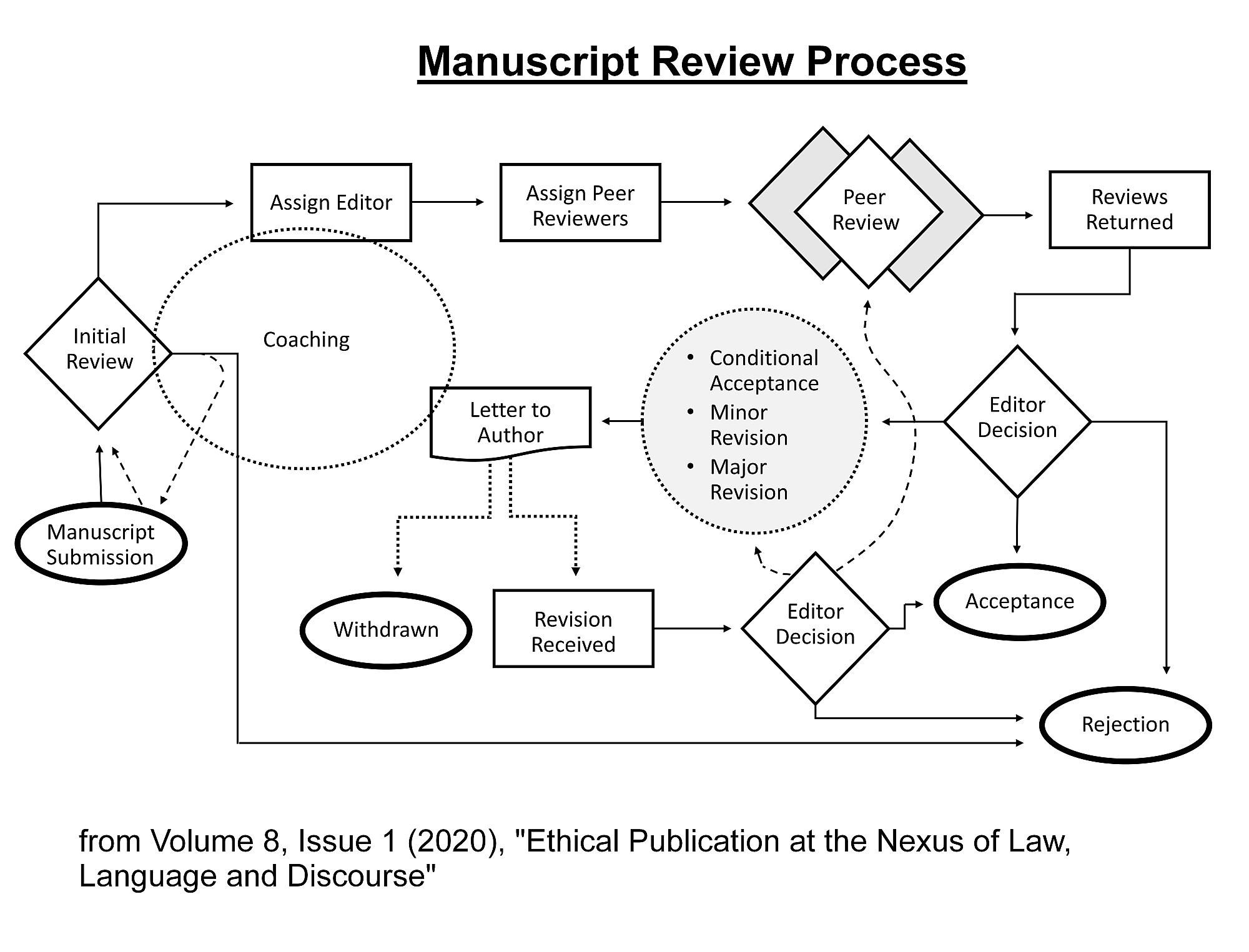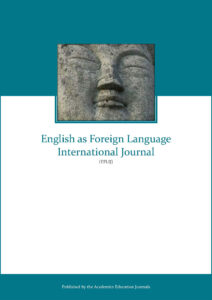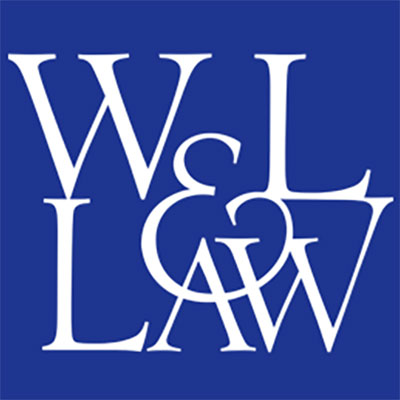IJLLD Manuscript Review Process & Referee Selection
The manuscript review process is overviewed in an editorial article in Volume 8, Issue 1 (2020), “Ethical Publication at the Nexus of Law, Language and Discourse” (Robert J. Dickey, pages 5-24). That article is summarized here, and more details are provided.
The Manuscript Review process (a.k.a. “Refereeing”) is an ever-evolving process… while journals pledge a certain uniform design, over time things will change. Individuals may request the most current details through inquiry with the editor at chief-editor@academics.educaion, but the following are the current standards (October 2020):
- Manuscript guidelines are available on the web-based submissions page.
- The Publication Ethics and Malpractice Statement (web page) provide general guidelines for those submitting a manuscript, the editorial team & reviewers (“referees”), and the publisher.
- Manuscript submission should ordinarily take place through the web-based submission system.
- The International Journal of Law, Language & Discourse (IJLLD) follows a “platinum model” where there are no fees for submission, review, or publication of manuscripts, and no fee to read or download papers that are placed under the “Creative Commons Attribution 4.0” international use license, i.e., the right to be recognized as an author remains with the manuscript author.
- An overall summary description of the Manuscript Review process may be found in the introductory article in Volume 8, Issue Number 1, “Ethical Publication at the Nexus of Law, Language and Discourse”.
- “Desk review” performed by the Editor-in-Chief or designate should result in initial confirmation of receipt and indication of expected progress within 7-10 days of submission.
- A “Coaching model” allows the desk review process to encourage revisions prior to formal commencement of the peer-review process, and such model also allows for extended interventions by the editorial team following rounds of referee scorings. In a nutshell, the aim is not to reject submissions, but to foster higher standards of scholarship.
- Manuscripts submitted for scholarly articles are ordinarily subject to double-blind peer review by not less than two “referees” — anonymous manuscripts are sent to the referees, and manuscript authors are not informed of the names of the referees for their submissions. Manuscripts may be sent to additional reviewers, informally or formally, as found needed by the editors.
- Manuscript Referees are selected by the editors based on a number of factors, including the topic under investigation, research methodology, and availability of reviewers. Both internal (Editorial Team member) and external reviewers may be utilized, based on the factors identified previously. Reviewers may subsequently be invited to serve on the editorial board, this does not affect their previous status as an outside reviewers. All referees are independent of the author — they are not affiliated with the same institution.
- A sample of the Peer Review Evaluation Rubric for Research Papers may be found here. The Rubric for “Papers from the Professions” is available upon request.
- A list of Referees and documents recording their assessments for each manuscript shall be retained. External authorities (e.g., a journal indexing service) may be provided referee-related documents to facilitate the indexing process.
- Referees’ services will be privately acknowledged through email or certificates upon request, but not announced publicly.
- Determinations for final acceptance of publication are made solely by the Editor-in-Chief or designate and the Publisher.
- Special submissions and special sections of the journal may be exempt from the ordinary reviews process, e.g., Editors’ articles, Reviews, Proceedings, Short Reports/Summaries.
Manuscript Review Process

Category: IJLLD



















